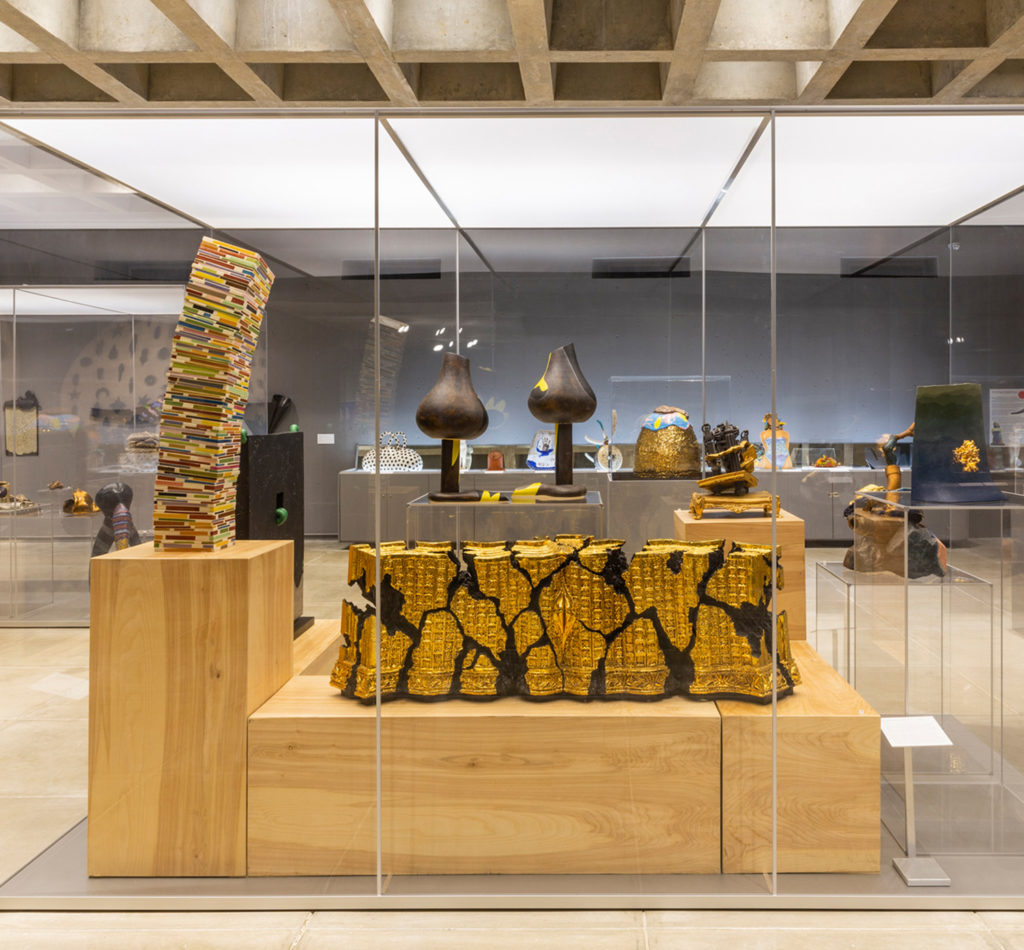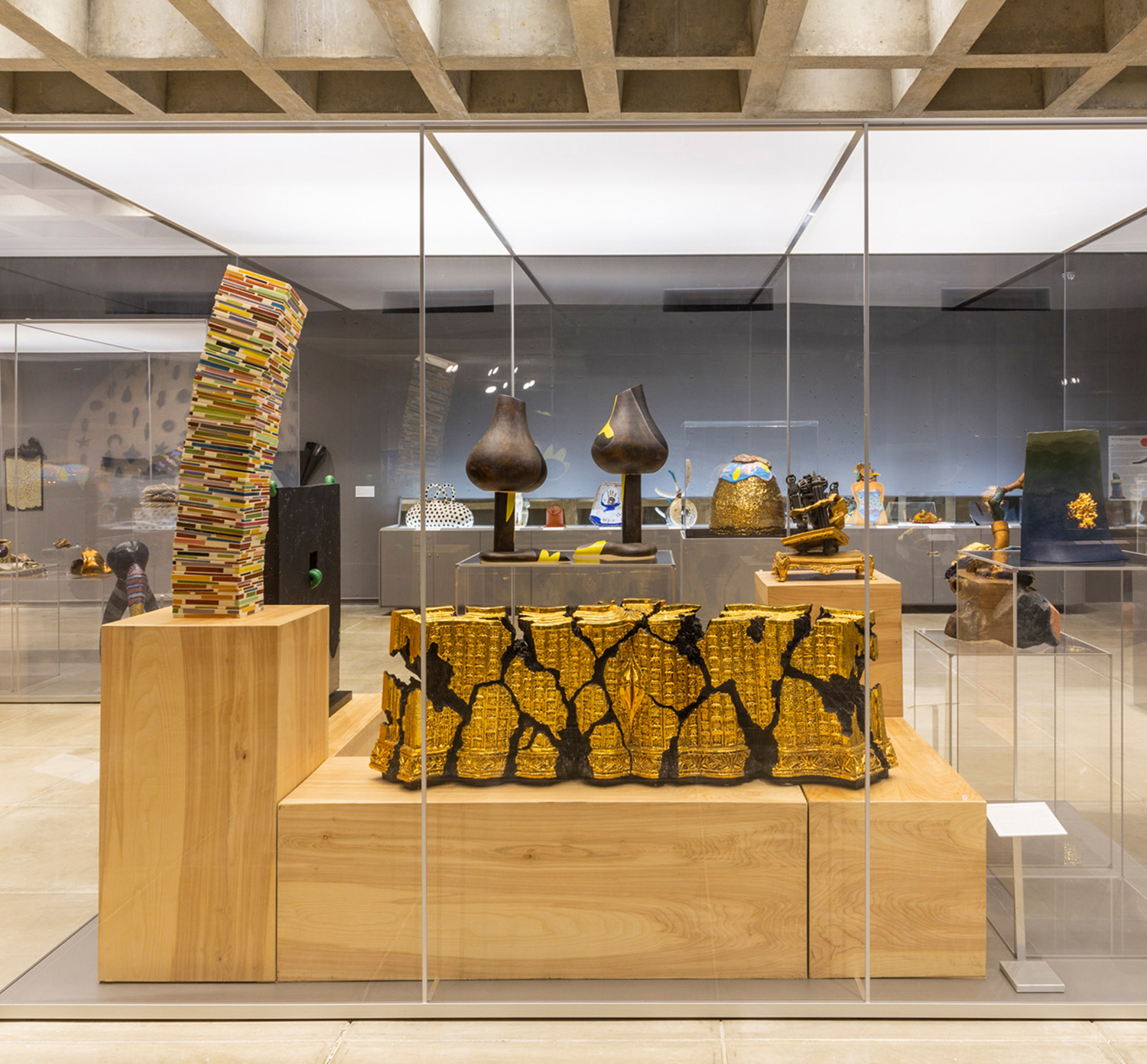‘Floating Bridge’ exhibit walks viewers through history of Japanese ceramic art
This article was originally published on March 12, 2021 in The Daily Orange. Read the full article HERE.
The exhibition sets out to “tell the story of this generation of artists who bucked the trends of previous generations of artists.``
Article Excerpt:
Walking in the large exhibition room at the Everson Museum of Art, Japanese ceramic artworks are arranged in different glass cases, hung on walls and lined along shelves. Panels on the history of Japanese ceramics art through many movements lead the audience through the “Floating Bridge” exhibition.
Jason Jose, an exhibition visitor, said the atmosphere feels like walking through history.
The exhibition focuses particularly on two eras of Japanese ceramics arts: the postmodern Sōdeisha movement — a liberating era of Japanese ceramic art that adhered to certain traditions — and the contemporary era, where artists show defiance toward tradition. The exhibition aims to showcase the transition between these two periods.
The “Floating Bridge” is currently on display at the Everson Museum until July 4. The exhibition sets out to “tell the story of this generation of artists who bucked the trends of previous generations of artists,” said Garth Johnson, the curator of ceramics at the museum. Johnson also stressed the importance of the relationships developed between the artists and the museum that led to this exhibition.
To connect an old and new era of art in Japan, the exhibition displays the work of a generation of artists who bring global and culturally diverse elements into a traditional form of ceramics.
“Really the era that the Everson was collecting, there was a group of artists that I know went far beyond Sōdeisha,” Johnson said. “So they were looking to Western artists; they were looking to pop art.”
The convergence and adaptation of different cultural elements in these traditional and long-standing artforms are shown through pieces such as “From Nice” by Hirai Tomokazu.
The piece speaks to the global network of Japanese ceramic artists, as Tomokazu incorporated global elements through bright colors and elements found in Italian and French fashion in the ‘80s, Johnson said.
Besides an increase in the inclusion of ideas, this generation of art also saw an increased representation of female artists who were historically underrepresented.
“Back even in the Sōdeisha era, ceramics were not friendly to women because usually the potters were men,” Johnson said. “The way that they taught their students was mainly through apprenticeships. And those were not really open to women.”
With these stories, the Everson Museum presents a special collection of arts with works that are important to Japanese ceramics. Through close connections developed by former director Ronald Kuchta with two artists, Kimiyo Mishima and Araki Takako, the museum was able to highlight works of other female artists. These relationships later helped connect Kuchta with other artists who donated their works to the museum. The works are on display in the exhibition.
The Syracuse University Art Museum is one of the crucial donors for the exhibition, Johnson said, but many other pieces came to the museum as gifts from the artists. These gifts represent the established relationship between the museum and the artists, as well as the devotion of the museum to ceramic art, Johnson said.
Some of these are major career pieces that the artists entrusted to the museum, “so it’s a celebration of those relationships,” Johnson said.
Steffi Chappell, assistant curator at the Everson Museum, believes that it’s significant to have an entire exhibition that shows a different facet of artwork in the community.
With the artwork’s rich cultural representation and the exhibit’s goal of showing the transition from the postmodern movement to the contemporary, the museum presents a distinguished collection, Johnson said.
“Hopefully, I’m changing people’s ideas of Japanese ceramics to let them know that it’s fun, it’s playful, it’s relevant,” Johnson said.



